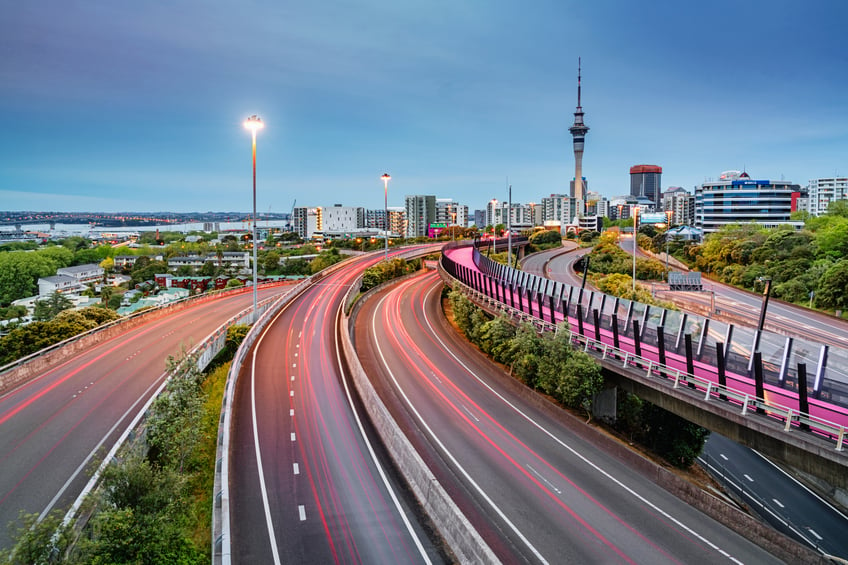Infrastructure is essential to the efficient operation of our cities and impacts on how we live, work and play. It can also offer a significant opportunity for those looking to invest in commercial property or businesses.

When people are not able to commute quickly from the suburbs into city centres, even the most dynamic labour markets begin to stagnate. Faster commutes mean less time in traffic and potentially more time engaged in productive work or spending those hard earned dollars on goods and services.
Congested roads don't just frustrate commuters, they slow down the flow of goods and raw materials which ultimately limit the country's potential for future economic growth.
According to government data, New Zealand has over 4,000 kilometres of freight and passenger rail corridors and spends billions on upgrading and maintaining existing assets, as well as building new transport infrastructure.
These projects are of great significance when it comes to forecasting New Zealand's future commercial property hotspots, as new public transport, roads and rail lines have the potential to transform and revitalise entire areas.
Predicting the hotspots
City transportation projects tend to signal where the next property hotspot will be. Historically this has been road or rail projects but there is increasing evidence to show that investment in public transport represents a higher value investment. There’s growing consensus worldwide that high quality, high capacity and affordable public transport is the only way for increasingly congested cities to accommodate sustained and sustainable economic growth.
But there isn’t necessarily a direct correlation between infrastructure investment and adjacent real estate investment. The increase in value from a transportation project in terms of improving access to business districts, opening new markets and reducing commute times can be negatively impacted by the diminished quality of open spaces, an adverse aesthetic or reduced safety conditions. There may also be a requirement for the government to re-zone in order for property investors to capitalise on the opportunities presented.
Upgrading ports or airports are considered a significant gain for the logistics industry but may affect neighbouring retail or residential areas by creating additional noise, pollution or construction traffic. In Auckland, the cost versus the benefits of moving Ports of Auckland away from its prime waterfront location has been debated for years, but if Northport was considered a viable alternative, commercial property around Marsden Point would rapidly increase in value.
The biggest challenge for real estate investors looking to benefit from infrastructure is timing. Often there is substantial period between announcement and completion, or even the start of construction. Major infrastructure projects inevitably get delayed due to availability of funding, resource consent, public consultations or changes in governments. This can have a significant effect on the real estate around it.
A high profile example is the City Rail Link development in Auckland. Due for completion in 2024, the City Rail Link is New Zealand’s largest ever infrastructure project. It includes a redeveloped Mt Eden station as well as two new underground stations, one at Wellesley and Victoria Streets and another at Karangahape Road.
This will extend rail transport throughout the city, as well as linking Mt Eden to the Northwest rail line. These new routes have the potential to fuel growth in areas like Pitt Street and Mercury Lane and to further support thriving areas such as Karangahape Road, Britomart and Victoria Street.
Commercial property and businesses in these areas could experience an uplift in value upon completion of the City Rail Link but as we’ve seen, this is a double-edged sword, with many businesses suffering significant downturns in patronage during the construction phase.
South of Auckland, proximity to infrastructure is fuelling demand in the industrial property sector. Growth in the “golden triangle” between Auckland, Waikato and the Bay of Plenty regions can be attributed to ports in Tauranga and Auckland, and Auckland’s international airport.
New Zealand Transport Agency data shows that 56% of national freight movements pass through the upper North Island, while about 35% of the country’s exports go through the port in Tauranga. The government has earmarked $55 billion for roading and land transport projects within the golden triangle over the next 10 years.
South Island infrastructure spending
Only a small fraction of the Government’s recently announced $12 billion infrastructure package will go to the South Island, with Queenstown to receive $90 million for roading improvements and $159 million allocated to Canterbury.
In Southland, New Zealand’s largest privately-owned transport company, H W Richardson, has partnered with the City Council to redevelop Invercargill’s ageing central city infrastructure. With many of the buildings decaying or untenanted, the project will see most of a city block demolished and replaced with a retail and office development estimated to cost $240 million.
The redevelopment is designed to make Invercargill a more attractive place to live and do business, and while businesses that remain in the CBD during the development phase can expect a significant impact on sales, the majority of business owners support the initiative which is expected to draw tourists and locals back into the city centre. Some commercial property owners could be negatively affected by the new development however as it draws tenants away from their current premises.
The key to a successful commercial real estate investment is to do your homework and work with a commercial real estate professional who understands the dynamics of the local market.
Sources:
www.fgould.com
www.realestate.co.nz
www.nzherald.co.nz
www.odt.co.nz
www.stuff.co.nz
www.stuff.co.nz
www.cityraillink.co.nz
This article featured in NAI Harcourts Market Leader Issue 1, 2020